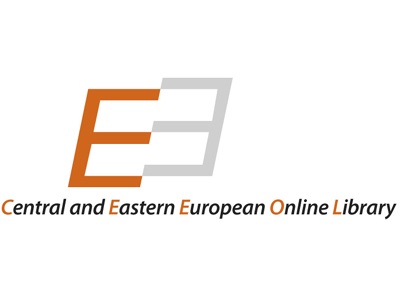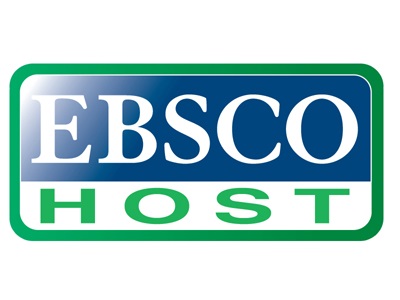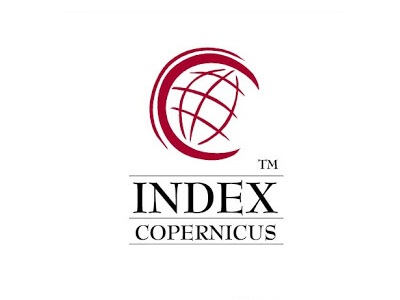
The paper aims at presenting important approaches of the influence of the public funding to industry, especially non-ferrous, in the Countries from Eastern Europe (CEE) and Romania. Studies presented in the paper show that the industry funding had been sustained by the European Commission in the community area, but particularly in CEE area. The impact of industry funding will never be exactly measured, but important data can be presented in order to foresee the future development of the European industry. Specific for non-ferrous industry, in the article there are presented important items, as turnover, value added cost, exports, production, which are correlated to EU funds absorption in order to measure the efficiency of the public funding for 2007-2013 period (national and EU funds) and the welfare of the CEE and Romanian non-ferrous sector.
- Type: Case Study
- Published on: 5th December, 2016
- Keywords: Public funding, 2007-2013 EU funds, Non-ferrous industry
- Received: 1st September, 2016
- Final revision and acceptance: 30th November, 2016

As result of the convergence of computers and mobile phones, Android comes with the great opportunity of implementing personal mobile applications in a Java language environment. The paper presents two main aspects concerning the new age of programming. The first aspect refers to the existing library of applications in economic domain. The paper extracts the most useful financial and business apps that run on Android smart-phones. The second aspect presents an example of building an economic application using one of Android’s various IDEs (Integrated Development Environments): Android Studio. The developed app calculates the prognosis of a business size starting from known statistic data sets and evaluates the effort of the business implementation, using the linear regression method. The app differs from other Android applications by the explicit answers that result from the regression calculus
- Type: Review Article
- Published on: 5th December, 2016
- Keywords: Android Studio, Economic apps, Java language, Linear regression
- Received: 5th September, 2016
- Final revision and acceptance: 30th November, 2016

In this article the literature based review of the developing of (logistificated) business processes and their reorganizations are shown briefly. The research of the service processes is also actual in our time giving work to managers and researches alike. In the narrowing market the increasing competition and the dominance of customers is a warning to the companies to carry out continuous rationalization and reductions of costs in order to increase efficiency. In this essay we would like to show briefly how we started our research primarily concentrating on technical literatures. First of all we concentrate on the improvement assets of processes. We will show some major tendencies in the process of Business Process Amelioration (BPA) evolution. The production focused approach of services can mean significant process improvement therefore it is a good analysis method of the process improvement.
- Type: Review Article
- Published on: 5th December, 2016
- Keywords: BPA, Fluid, Fluidflow, Process, Logistification, Service
- Received: 25th April, 2016
- Final revision and acceptance: 30th November, 2016

Pakistan is a developing economy and business groups are key players of the Pakistan’s economy. Previous research evidence shows that in the emerging economies group affiliation creates value for the firms. This study is intended to empirically investigate to know that whether group affiliated (GA) firms perform financially better than non-group affiliated firms or not? GA firms in emerging economies can have better financial performance by sharing tangible and intangible resources at group level. The financial ratio is used to compare performance of affiliated and non-group affiliated firms by using the data of 70 textile firms listed at Karachi Stock Exchange(now Pakistan Stock Exchange) covering a period from 2008 to 2012. Based on mean values of return on assets (ROA), results of the study show that GA firms have higher financial performance than non-group affiliated firms in each year and over all five years.
- Type: Case Study
- Published on: 5th December, 2016
- Keywords: Business Groups, Financial Performance, Profitability, Group Affiliated, Pakistan
- Received: 5th May, 2016
- Final revision and acceptance: 30th November, 2016

The basic new Keynesian model rendered in this paper, as well as the analysis of the reaction of economic variables to the occurrence of a structural, monetary policy shock, strengthen the hypothesis exposed at pure theoretical level, namely the active role of Central Banks in economy, the classical dichotomy between the nominal and the real economic factors being abandoned. As reflected by the impulse-response function graphs, the model endogenous variables: output, output gap, labour hours, inflation rate, nominal interest rate and real interest rate, clearly react to the exogenous variables of the same, represented by structural shocks, returning afterwards, more or less quickly, to their initial steady state. In compliance with the literature in the matter, the monetary entity policies, although having a lower impact than the one generated by the technological changes, manifest obvious influences on the model variables, therefore affecting both the decisions of the representative agents, at microeconomic level, and the aggregate economy, as a whole.
- Type: Original Research
- Published on: 5th December, 2016
- Keywords: New Keynesian model, Dynamic Stochastic General Equilibrium model, Price stickiness, Monopolistic competition, Monetary policy shock
- Received: 8th June, 2016
- Final revision and acceptance: 30th November, 2016

Expanding the existing literature regarding the relationship between fiscal policy and sock market, this paper will analyse the response of stock markets from Central and Eastern Europe (Bulgaria, Check Republic, Slovakia, Poland and Romania), to a deviation in fiscal policy by using a Vector Autoregressive model (VAR) for quarterly data, for the period 2004-2015. The effect of crisis over stock market performance is significantly negative for all analysed countries, while governmental expenditure increased in Bulgaria, Check Republic, Slovakia and Romania, and governmental revenues increased only in Check Republic, Hungary and Slovakia. The paper highlights that an increase of stock market performance leads to a decrease of governmental expenditure in Slovakia, Romania, Check Republic and Bulgaria, due to the existence of a performant private sector which comes and compensates the investments. The Romanian’s governmental expenditure decreased considerably in comparison with other countries. Also, in Poland case, there is no relation between stock market performance and governmental expenditure.
- Type: Case Study
- Published on: 5th December, 2016
- Keywords: Fiscal policy, Capital market, VAR, Financial crisis
- Received: 16th February, 2016
- Final revision and acceptance: 30th November, 2016

The demographic dynamics analysed in the context of the relationship between economic development and social inclusion presents an image of the sustainable development of a community as well as the manner how the financial resources have been used. With an allocation of 74.3 million euro in the programming period 2007-2013, the Brasov Growth Pole has pursued the contribution to the achievement of sustainable development since 2005 by the participation in the Agenda 21. The implementation of projects with European financing in areas such as transport, social and educational infrastructure or tourism have generated changes/demographic movements, which this paper proposes to present. The evolution of the stable population, its dynamics at the level of each locality that is part of the Brasov growth pole as well as the dynamics of the number of employees or the development of the unemployment rate are presented by the cluster analysis. The effects of the European financing obtained from Regional Operational Programme 2007-2013 are thus reflected in the sustainable development of the Brasov growth pole from the point of view of the dynamics of the population.
- Type: Case Study
- Published on: 5th December, 2016
- Keywords: Growth pole, European Structural Funds, Demographic Dynamics
- Received: 25th April, 2016
- Final revision and acceptance: 30th November, 2016

For the Romanian economy, Constanța is appreciated mainly because it is the biggest port town in the country, and for many generations it has been the city where they spend many of their summer holidays. But how many of us know that the bathroom resort – Constanța has an officially attested existence of 140 years? In this study, the aim is, on one side, to present the significant moments in the history and evolution of this historic city, in order to bring to the foreground and sustain the position that the city has at the present moment in the system of touristic spots on the Romanian seaside, and on the other side, our concern is to know the future evolution of the touristic activity, to make some previsions using the ARIMA models, for one of the most used indicators in the analysis of touristic circulation, respectively: the number of arrivals of tourists, structurally and totally: Romanian and foreigners. We think that the obtained results, applying these models, may be considered a solid base for different debates regarding the choice of an efficient strategy, that should allow reaching an equilibrium between the effort of attracting a number of tourists as big as possible (Romanian and foreigners), of growing their degree of satisfaction towards the touristic offer and the concern of not generating disruptions in the economic, social and cultural life of the city.
- Type: Case Study
- Published on: 5th December, 2016
- Keywords: Tourists’ arrivals, Autoregressive models, Previsions
- Received: 25th September, 2016
- Final revision and acceptance: 30th November, 2016

The economic world in which tourism companies act today is in a continuous changing process. The most important factor of these changes is the globalization of their environment, both in economic, social, natural and cultural aspects. The tourism companies can benefit from the opportunities brought by globalization, but also could be menaced by the new context. How could react the companies to these changes in order to create and maintain long term competitive advantage for their business? In the present paper we make a literature review of the new tourism companies´ business approach: the networks - a result and/or a reason for exploiting the opportunities or, on the contrary, for keeping their actual position on the market. It’s a qualitative approach and the research methods used are analyses, synthesis, abstraction, which are considered the most appropriate to achieve the objective of the paper.
- Type: Review Article
- Published on: 5th December, 2016
- Keywords: Network, Tourism companies, Globalization, Competitive advantage, Strategies
- Received: 14th July, 2016
- Final revision and acceptance: 30th November, 2016

Capital structure is essential for the survival, growth and performance of a firm. There has been a growing interest worldwide in identifying the factors associated with debt leverage. This article aims to investigate the factors affecting the capital structure of companies listed on the Athens Stock Exchange (ASE). The data set used is composed of indicators reflecting the financial position and performance of 40 firms listed on the ASE in 2014. Using a regression model we estimate in what extent the financial structure of companies is affected by performance indicators and other specific factors like the field of activity or the size of the firms. The results obtained show an important influence of share of tangible assets in total assets of the company on the financial leverage, as main variable selected in order to reflect the capital structure of Greek companies.
- Type: Case Study
- Published on: 5th July, 2016
- Keywords: Financial structure, Performance indicators, Regression model
- Received: 5th December, 2015
- Final revision and acceptance: 30th June, 2016

This study aims to analyze the distribution of each flow of non-residents tourists, coming from 33 countries, on the six main categories of touristic destinations in Romania, in 2015, and assumes that there are differences or similarities between the tourists origin country and the touristic destinations that they chose. The performances recorded in Romania regarding the attraction of foreign tourists were relatively modest during the past three decades, from various reasons, starting with a poor access infrastructure and finishing with a deficient and, sometimes inadequate activity of tourism promotion. The statistical method used is the factorial correspondences analysis. The data processing, the indicators significance testing and the graph representations were performed using SPSS statistical software. We consider that the usage of this method allows the indirect knowledge of the tourist preferences and the results may be useful in developing a strategy for tourism promotion, customized for each country that sends tourists.
- Type: Original Research
- Published on: 5th July, 2016
- Keywords: Factorial correspondences analysis, Tourist flows, incoming tourism, Touristic destination
- Received: 25th January, 2016
- Final revision and acceptance: 30th June, 2016

Nowadays research in consumer behaviour has become really useful in understanding consumer needs regarding the use of products or services. Despite the tremendous work carried out in the field of consumer behaviour, few studies have concentrated on the organizational consumers as main buyers in the market. In this regard, considering the economic sectors of Romania, the main purpose of the article consists in characterizing the national industrial buyers taking into consideration the organizational consumer approach. Using an empirical study based on the macroeconomic indicators published by the Romanian National Institute of Statistics, we aimed to identify the components of the organizational market in Romania. In this regard, we selected several statistical indicators specific for the agriculture sector which can help us understand the behaviour of the organizations from this area considering the buying perspective. The results obtained demonstrate that although there are many macroeconomic indicators in the agriculture sector (43) few of them (19) provide significant information regarding the industrial buying behaviour among Romanian firms from this area.
- Type: Case Study
- Published on: 5th July, 2016
- Keywords: Organisational consumer behaviour, Romanian industrial market, Organisational buyers
- Received: 12th February, 2016
- Final revision and acceptance: 30th June, 2016

Current Romanian education emphasizes pupil group action in learning situations frontal organized, independently or in micro-groups. Thus, differentiated learning suffers, because it requires an individualized learning, and not just individual; there is necessary to alternate the organizing forms of learning situations, so they to produce progress in pupils’ learning. Using the method of the experiment, the undertaken research project has studied the impact of organizing individual learning situations compared to harmonizing the organizing forms of cooperative learning on pupil achievement in primary education. The experiential research sample consisted of 2 teachers and 56 pupils of class II. The control group comprised a class of 27 pupils, who have carried on an individual learning activity. The experiential group comprised 29 pupils who have carried out an activity based on the harmonizing different organizing forms of collaborationlearning. In the final assessment test, the results obtained by pupils confirmed the research hypothesis, demonstrating that in order to efficiently achieve the differentiated learning there is required a combination of organizing forms of learning and a stimulus for pupils’ collaborationwhich to increase their motivation for learning.
- Type: Original Research
- Published on: 5th July, 2016
- Keywords: Efficiency learning, Differentiated learning, Independent learning, Collaborative learning, Organizing forms
- Received: 25th November, 2015
- Final revision and acceptance: 30th June, 2016

This paper is intended to clarify the European Commission’s Education and Training (ET 2020) strategy, focusing primarily on the dimension of educational attainment. According to the ET 2020, the percentage of the population aged between 30 and 34 who have completed their tertiary education, should be at least 40% by 2020. Meanwhile, also forecasts a reduction in the early school leaver rate to less than 10%. The purposes of this study are to explore the present educational attainment performance in various OECD countries and to analyse the determinants of productivity growth regarding these educational targets. We found that in long run, an increase in the level of human capital resulted in a greater increase in productivity in those countries where the tertiary education and early school leaver ratios targets are achieved. Our conclusions highlight that educational reforms are needed to rethink the establishment of knowledge societies.
- Type: Case Study
- Published on: 5th July, 2016
- Keywords: Productivity growth, Human capital, Education and training policy, Educational attainment, Cross country analysis
- Received: 19th March, 2016
- Final revision and acceptance: 30th June, 2016

The current paper proposes a methodology for bankruptcy prediction applicable for Romanian companies. Low bankruptcy frequencies registered in the past have limited the importance of bankruptcy prediction in Romania. The changes in the economic environment brought by the economic crisis, as well as by the entrance in the European Union, make the availability of performing bankruptcy assessment tools more important than ever before. The proposed methodology is centred on a multivariate model, developed through discriminant analysis. Financial ratios are employed as explanatory variables within the model. The study has included 53,252 yearly financial statements from the period 2007 – 2010, with the state of the companies being monitored until the end of 2012. It thus employs the largest sample ever used in Romanian research in the field of bankruptcy prediction, not targeting high levels of accuracy over isolated samples, but reliability and ease of use over the entire population.
- Type: Case Study
- Published on: 5th July, 2016
- Keywords: Discriminant analysis, Risk, Failure, Financial ratios, Classification accuracy, Benchmark
- Received: 25th April, 2016
- Final revision and acceptance: 30th June, 2016

The purpose of this study was to examine the franchise as a form of enterprise in perspective to existing family businesses and how can they operate this way. Why is this form better for them, what advantages it has? In this case an ice cream shop’s economic inidicators were examined ,one which is owned by a hungarian family in Jász-Nagykun-Szolnok county who runs several shops like this. That is why this study was made, to find out if it is possible to run it sucsessfully and what costs does the newcomers in the franchise business network have to pay and how much is the time on the return of investments.
- Type: Case Study
- Published on: 5th July, 2016
- Keywords: Franchise, Family business, Enterprise
- Received: 6th January, 2016
- Final revision and acceptance: 30th June, 2016

The Mamaia station is, at the moment, the biggest and the most looked for touristic station from the Romanian seaside of the Black Sea. From the analysis of the evolution of the main indicators of touristic circulation from the last 10 years (2006-2015), we can notice a significant increase, but we are also interested in knowing the tendency of their modification in the near future. For this reason, in the present study, we wanted to test the contribution of the models ARIMA to the elaboration of an anticipation regarding the indicators: arrivals of tourists, totally and structurally: Romanians and foreigners, for Mamaia station. We consider that the results obtained in this study may contribute to the defining of the strategy of development of the station and ensuring the necessary conditions for hosting a significant greater number of tourists, in the following years.
- Type: Case Study
- Published on: 5th July, 2016
- Keywords: Tourists arrivals, Auto regressive models, Prevision
- Received: 28th February, 2016
- Final revision and acceptance: 30th June, 2016











